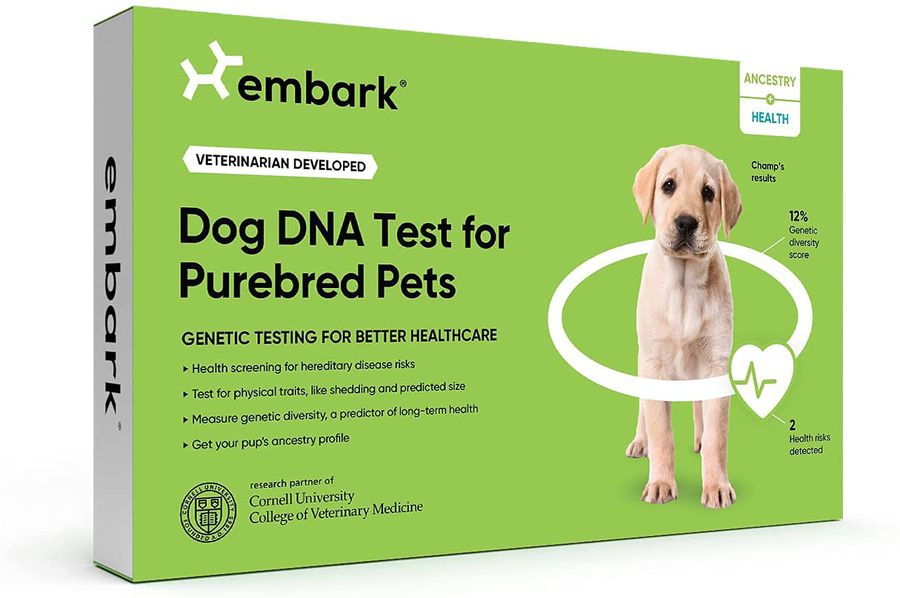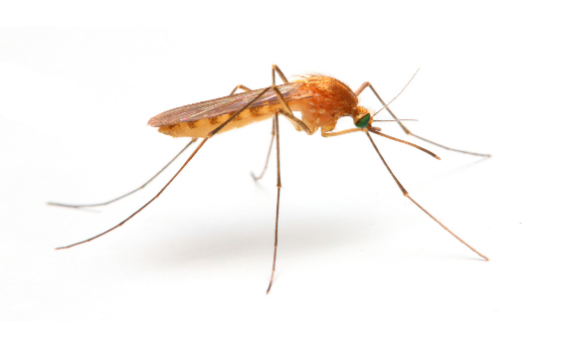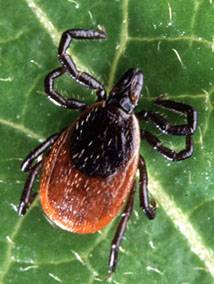Our Blog
Trick or Treating with Your Dog

By Amanda Jelinek, Receptionist at ZimmVet
Halloween is such a fun time for you and your families; however, what about your furry family members?
Although we may think it would be great to have our dog with us while trick or treating, they may not think the same.
First, I would take some time and think of your dogs’ behaviors in different situations. Does your dog like ALL kids? Is your dog noise sensitive? Does your dog react to sudden movements or costumes? Does your dog do well on a leash? Does your dog startle easily in the dark? If you are unsure of any of these, it would be best to keep your dog safe at home in a quiet spot.
If your dog is a social butterfly and you think they will do great, do a ‘test run’ and see how they do prior to the big night. Be alert with your dog; make sure they do not eat any candy or anything off the ground. Remember that chocolate is toxic to them. If they ingest wrappers, toys, glow sticks etc. contact your veterinary office.
Some other things to be prepared for is to make sure your dog is visible; we recommend putting a reflective tag or leash on your dog. Depending how long you will be out, bringing water is a good idea. If you want to reward along the way, you should bring your dog’s favorite treats. Also, make sure you bring poop bags to pick up after your dog!
If you have any questions about bringing your dog out for this fun evening, reach out to your veterinary clinic staff.
Enjoy your evening and stay safe!!!
Genetic Health Testing
By Dr. Maria Krenz, DMV- ZimmVet
Genetic Health Testing
There are a variety of companies who provide genetic testing. Some genetic tests an owner can collect at home with a swab of the mouth. Other genetic tests require a blood draw at a veterinary office. Tests can provide information such as:
- Breed makeup of your dog
- Genetic mutations
- Predictor of adult weight and size
- Genetic traits such as coat, muscling, tendency to overeat
Veterinary Use
Your veterinarian may recommend you have a genetic test preformed on your dog, if they are a breed at risk for certain genetic diseases or showing illness that could be related to a genetic disease. An example of a disease is the multidrug resistance mutation 1 (MDR1). This disease refers to a specific mutation that can occur at a gene known as the MDR1 gene. A mutation at the MDR1 gene makes dogs more sensitive to the negative effects of certain medications. Dogs with this gene can have life threatening reactions to certain medications. Approximately three of every four collies have the mutant MDR1 gene. The MDR1 mutation has also been found in Shetland Sheepdogs (Shelties), Australian Shepherds, Old English Sheepdogs, English Shepherds, German Shepherds, Long-Haired Whippets, Silken Windhounds, and a variety of mixed-breed dogs.
Knowing your pet’s genetic makeup can create more awareness of diseases that are more common in certain breeds. For example, if your pet has Cavalier King Charles Spaniel in its background your veterinarian would want to do regular screens for heart disease, since it is very common in this breed.
Pet owners will need the help of their veterinarian or the genetic testing company’s technical staff to help decipher the genetic mutation part of the test. Some of the mutations are not significant, but others may be.
As a pet owner, knowing your dog’s breed background can help with knowing your dog’s temperament and tendencies. In a puppy, it can give you insight on what to expect as they grow and mature.
Examples
Examples of companies that provide Genetic testing include:
Royal Canin Genetic Health Testing – www.royalcanin.com/us/dogs/genetic-health-analysis
Wisdom Panel – www.wisdompanel.com/
Embark – embarkvet.com/
Disclaimer: This written content is meant to be educational and is not medical advice. Always consult a veterinarian about medical advice for your pet.

Recipe for Fun with the Pups!
Pupcakes Recipe
By: Mysi Szczech, Veterinary Technician in Training at ZimmVet
Our dogs are important members of our family. We love to celebrate them and I think a great way to do that is to make them a special birthday treat! I found a recipe that’s easy, quick and I have made them for my own puppies and they loved them! Here is the recipe!
Ingredients:
Cupcakes
-2 tbsp natural peanut butter
-2 tbsp oil
-1 medium banana (mashed)
-2 tbsp honey
-1/2 cup flour
-1/2 tsp baking soda
-1/4 baking powder
Frosting
-1 medium banana (mashed)
– 4 tbsp peanut butter
Cupcake recipe:
- Preheat oven to 350. Spray muffin tin with non-stick cooking spray or use paper muffin cups.
- 2. Mash one banana
- Mix banana, oil, peanut butter and honey in a mixing bowl.
- Add the flour, baking soda and baking powder. Stir to combine.
- Scoop batter into muffin tin until each one is ¾ full.
- Bake for 10-15 minutes. The cupcakes are done when a toothpick is inserted in the middle comes out clean.
- Allow cupcakes to cool for 5 minutes then remove them from the pan. Allow to cool completely before frosting.
Frosting recipe:
- Mash remaining banana. The smoother you mash it the smoother the frosting will be.
- Add peanut butter and mix until smooth.
- Spread frosting on cooled cupcakes.
- Top with small dog treat for a little extra!
Make Puppies into Good Citizens
By Dr. Maria Krenz, DVM – ZimmVet-763-856-4848
Puppy Socialization Builds Confident Adult Dogs
For a puppy to become a confident adult, we must provide a good learning foundation. This foundation is more than teaching the basic commands of sit and lie down. It is also about exposing your puppy to places and situations they will most likely experience during their entire lifetime.
Socialization goes beyond having your puppy play with the neighbor dog or a family member’s dog. Your puppy will learn how to play with familiar dogs, but they will not gain enough exposure to other dogs and situations to fully learn. Socializing your puppy to dogs of all breeds is very important, and is a vital factor in teaching them acceptable play with other dogs. Puppies learn appropriate play and bite inhibition during these play times with other dogs. This is something that we cannot teach them.
Socializing your puppy to people of every ethnicity, tall and short, young and old, as well as people with glasses, hats or other accessories is also important for their development.
Positive Experiences Can Help Shape a Puppies Personality
A puppy brain is like a little sponge. Everything it is exposed to stays in their little memory bank. Make sure when exposing them to new things and situations that it is done in a positive way. These experiences are what helps form their personality. They are born with a certain temperament, but the positive experiences they are introduced to and how they are raised is what forms their personality.
Puppies are learning all of the time, not just when they are in a structured environment like a puppy training class. Using harsh punishment, rough handling or tools like a pinch collar, training (choke) collar or electronic collar can hurt them and change their personality, negatively. These practices will also make them more likely to be reactive and show aggressive behaviors as an adolescent and adult.
All of the time and investment you put into your puppy by giving them a good, positive learning foundation will payoff throughout their life. Puppies can be challenging, but watching your puppy develop into a confident adult is worth it.
Some Great ways to Socialize your puppy
- Doggie Daycare.
- Puppy Play Parties
- Training Classes
- Taking them with you everywhere. Allow them to meet other people, and pets.
- Let them investigate their surroundings during their walks.
Disclaimer: This written content is meant to be educational and is not medical advice. Always consult a veterinarian about medical advice for your pet.
The Importance of Preventatives Year Round (Even in Minnesota!)
By: Dr. Leslie Reed, Veterinarian at ZimmVet
WHY does my dog need to stay on heartworm, flea & tick prevention in the winter?? There’s no bugs out!
Contrary to popular belief, fleas, ticks, mosquitos and other external parasites can remain active YEAR-ROUND and can negatively affect our pets. Here’s why it’s recommended you keep your furry family members on their preventatives at all times.

Heartworm Prevention
Even though mosquitoes are cold-blooded and typically become inactive at temps <50 degrees F, they can find and hide within a warm area (ie your house) to lay their eggs and remain active even throughout the cold winter months. Furthermore, fluctuating temperatures and those occasional warm days where temps suddenly rise may disturb a mosquito’s hibernation, sending them off for a quick meal on your pet.
It takes only 1 mosquito and 1 missed dose of prevention to contract heartworm disease.
Heartworm prevention year-round is much cheaper (and much more pleasant) for your pet than heartworm treatment, which can span several months and is typically a series of deep, rather painful, muscle injections with side effects including swelling, discomfort, and inappetence.
Oral heartworm preventatives also address intestinal parasites either through the active ingredient or an additional added ingredient. Some combat fleas as well. Intestinal parasites can be picked up by your pet all year long by consuming feces of other dogs or wildlife which may be intentional (yuck!) or non-intentional (licking of paws with fecal matter on them).
Flea and Tick Prevention

Fleas are the most common external parasite of dogs and cats and have the ability to transmit disease to both pets AND their humans. Most pets acquire fleas not from contact from another infested animal, but from an infested environment.
When a pet comes into your home with fleas, which can make the pet itchy, eggs can fall into your carpet or bedding as the pet scratches, along with flea dirt (flea feces). The eggs hatch to larvae, which develop by feeding on the flea dirt. The larvae then spin a cocoon in fibers such as carpet or bedding to form a pupae, where a live flea will eventually hatch and then latch on to a warm body (cat, dog, human). Pupae are resistant to drying, freezing, and insecticides and can remain dormant for months. The entire flea life cycle can repeat itself every 3 weeks.
Not all pets with fleas will itch, only those allergic to the flea bites. So just monitoring for itching is not sufficient.
Heavy flea infestations can lead to severe anemia, which can be life threatening (pets at highest risk are young kittens and puppies being raised outdoors, as well as elderly cats going outdoors).
Use flea control products all year round so you don’t get caught with a surprise heavy flea burden in the spring. Home decontamination is NOT a fun process.
Ticks typically remain dormant in the winter, but can awaken during rising temps, even at 40-50 degree F, and crawl off to find a warm body to jump on to.
It takes a single tick feeding for 48 hours to transmit Lyme disease. Lyme disease can cause joint soreness/stiffness, fever, anorexia, lethargy, and in advanced cases, acute kidney failure.
Other common tick-borne diseases in Minnesota include Ehrlichiosis and Anaplasmosis, which can cause similar symptoms as Lyme disease, as well as bleeding disorders secondary to destruction of platelets. These diseases may be transmitted to your pet if a tick is attached for 24 hours or possibly even less!
Again, prevention is typically much cheaper and much more pleasant for your pet!

Get protected!
There are many options for heartworm, flea, and tick preventatives (even some all-in-one products), so check in with your veterinarian to determine which would be the best option for your pet!
Agility for Dogs
By: Casey Carlson, Veterinary Technician at ZimmVet
One of the best ways to bond and interact with your pup is through agility!
The two of you will work as a team in agility, starting with trust, patience, and reward.
Start out with the mindset of this being fun, relaxed, and simple ‘asks’ of your dog.
First, you will want to start with a six-foot lead and preferably a harness that has a grab handle on top. The harness should fit snugly, without having too much ability to slip on any part of your dog’s body.
Next, you’ll want to have high-value treats on hand that can be given as a very small amount. A high-value treat would be food that your dog just cannot resist! An example might be hot dog bits or dried liver pieces (always make sure they are in small amounts and dog-friendly).
Last, and most importantly, make sure your surroundings and the items to be used are safe and secure. Having a safe environment makes learning and training much less stressful for your dog and injury less likely. The best area to practice in should be a fenced in or enclosed area; this will be perfect when you attempt off-leash commands for the first time!
Equipment for your course:
A pause table that can be a 6×6 foot wooden box with a height no more than one foot. Depending on the size of your dog, you may need this to be shorter. A seat cushion or pillow can be substituted to start out!
Poles or pool noodles will make great cavaletti equipment when placed on the ground. Always make sure the item can ‘break-away’ easily – meaning that it is not fixed and will not have potential to injure your pup.
Note: Starting out, it’s best to use the length of your dog’s body to help you decide the spacing between objects your dog will be walking, jumping, or running over.
Now that you have everything set up, you’ll need to guide your pup through the course. Those high-value treats are going to come in handy at this point.
Start at your pause table/object with your pup in a calm sitting position. Give a couple of rewards for your dog maintaining their position while staying engaged with you (eye contact, treat focus).
Next, guide your pup using your arm held out (like an airplane wing!) as you walk past each pool noodle. If your pup is still engaging with you, they will attempt to walk over the obstacles as you guide them. If they seem to be distracted or losing direction, try throwing a treat over the obstacle as you go past. Get excited and praise them when they come back to focus!
After repeating the task enough times, your dog should be more aware of the obstacles and what you’re asking them to do!
Agility should always be fun for you both; never force your dog to do tasks. Help them build confidence with praise and reward instead. You will get there with patience and time.
You’ve established the most important tool in agility – attention and team work!
If you are interested in taking your pup to the next level, here are just a few DIY ideas and more information at USDAA’s website.
Agility Course DIY:
http://www.gonetothesnowdogs.com/diy-agility-jumps/
Living with a Senior Pet
Living with a Senior Pet
By: Wanda Becker, Certified Veterinary Technician at ZimmVet
Senior years begin in most pets and breeds at 7 years of age. Here are some tips for senior dogs from my person experience managing my senior dog, Lucy.
Lucy and I use to take long walks, with her running down streets, having fun walking and running down groomed paths and long tall grassy areas. Then gradually she started to slow down. I started Lucy on a joint supplement, Dasuquin. The Dasuquin helped, and we were starting to take our usual walks again.
As Lucy aged more, I recognized that she was having more mobility issues. Her back end was showing some muscle atrophy, knees and hips were getting a little weak. We started taking shorter walks and fewer running activities.
As Lucy’s mobility declined, she was started on an oral pet pain medication. With this medication she could go on longer walks and frolic in the tall grass. Arthritis can slow your pet down but you don’t want to stop activity level. Moving is still good for everyone, and keeping the joints mobile.
Other things that helped Lucy were an orthopedic bed. Placed several comfy beds around the house so she wouldn’t have to walk so far to find a place to rest. Lucy loved to curl up in her different beds and watch what going on. I also kept her mind busy, by using a busy feeding ball. To help her move around better without slipping I started placing rugs all over the house and floors. I placed her food dishes up off the floor so it
made it easier for her to eat or swallow food. To help with body temperature I placing a coat on her during her walks when the weather started to get colder. When snowy weather was here, I would place booties on her feet, and at first, she didn’t like them but as time went on, she didn’t want to go outside without her booties.
So, as your pet enters into their senior years and you notice those gray hairs, just keep in mind there will be changes. Keeping up on your pets’ exams and blood work. Giving supplements and pain medications to keep them in less pain and keep moving. Keeping your senior pet comfortable just like you do when an elderly family member enters into their senior years. Enjoy and love every moment with your senior pet. Time goes by fast.
Introducing a New Puppy
By: Casey Carlson, Veterinary Technician at ZimmVet
Are you considering a new puppy to your family? Do you have an older dog that you aren’t sure will accept a new puppy should you bring one home? These are just a couple of questions pet owners should consider before adding furry family members to their home. One problem that seems quite common, are mismatched energy levels among resident dogs with a much younger dog or puppy. Young dogs and puppies are still learning what older dogs might already know; appropriate behavior and boundaries.
What are boundaries and appropriate behavior in your dog’s world? If you observe your pet when they meet a new dog, you might have a good idea of how a new puppy would influence your dog’s behavior. For example; your dog engages in play for short bursts of time with rest in between, but the puppy will want to continue engaging with or rough playing during the older dog’s rest periods. This is considered inappropriate behavior because the puppy is not giving your older dog their time to rest on their terms. The older dog will begin to show signs of stress if their warnings to the puppy go unnoticed. They will show this by physical signs – pinned back ears, panting, unable to relax to lay down, or other warning signs that they are becoming overwhelmed. The puppy still doesn’t respond correctly, so they may continue being in the other dog’s personal space which is when serious harm could happen. It may start with a low growl or curl of the lips from the older dog, which the puppy could mistakenly interpret as part of wanting to play. If a puppy is still allowed to ignore these signs to stop, the older dog will sooner or later be given no other choice and become aggressive to protect themselves and their space.Given this is just an example of how aggression can escalate, the difference in play style should also be taken into consideration when looking to add a new puppy.Does the resident dog have high-energy or prefer naps and cuddles? Are you looking for a breed of puppy that could grow larger than your current pet? Does your current dog become intimidated with other pets in their home?
As overwhelming as this may seem, there are methods to create a healthy balance in your home should you decide to move forward with a new puppy.Using the example above, use the mind-set that you are your dog’s advocate. You can be their ‘referee’ when they are showing signs of stress or frustration. Here are just a few tips to help avoid confrontation or aggression between your dog and a new puppy.
- Always supervise your pets when they are becoming acquainted. Never let them roam the house or yard unattended.
- Give your dog and the new puppy ample time to slowly get to know one another. Avoid having their first meeting in a small and enclosed space and have both pets leashed or a barrier to keep from front-faced meetings.
- Rotate your new puppy and resident dog through areas they have frequented. This will allow your dog to smell and become comfortable with the new puppy before meeting them face-to-face.
- Interrupt inappropriate play or behaviors. If the puppy is not respecting your dog’s need for a break, you must provide it for them by separating them for a brief period until the new puppy learns these cues.
- Interrupt repeated or concerning behaviors, such as rough play that could injure the puppy or energy escalation.
Being conscious of your current dog’s behaviors and needs will help you safely choose and integrate a new puppy into your home. Asking yourself the questions above will help narrow the risk of aggression and keep your pets safety and healthy behaviors intact.
For more information on adding a new puppy to your pack, visiting with a trainer or having an in-home consultation could be beneficial to ensuring your dog’s best interest is kept in mind during the process of adding your new furry family member. Below are additional resources to help determine symptoms of canine stress and escalation, as well as tips and tricks to safely having your dog and puppy meet for the first time.
Resources:
Socializing your new puppy
https://www.avma.org/resources-tools/animal-health-and-welfare/socialization-dogs-and-cats
Reading canine body language
https://www.avma.org/resources/pet-owners/how-read-dog-body-language
More on reading and understanding canine body language
Understanding signs of aggression and avoiding harmful situations
https://www.avma.org/resources-tools/pet-owners/dog-bite-prevention
Behavioral Options For Your Pets
By Dr. Maria Krenz, DVM – ZimmVet-763-856-4848
Anxiety in Pets
Pets can exhibit a variant of different behavioral conditions. Fear is an adverse emotional state in reaction to a perceived threat or danger. Phobia is a sudden profound or excessive fear response. Anxiety is a diffuse generalized unease. It can be situational or generalized on a daily basis by multiple stimuli.
These behavioral conditions can be the result of a negative experience or could be from a lack of exposure (new situation). Many pets especially those that show anxiety on a regular basis have a genetic component and the brain chemical balance is altered. Anxiety disorders are common and affect about 23 million pets in the US.
Signs
Pets can show a variety of signs of fear including: increased heart rate, increased respiratory rate (panting), sweating, trembling, pacing, urination, defecation and/or anal sac secretion. Behaviorally, a pet will exhibit changes in body language or activity when afraid. Which may include avoiding eye contact, looking away, turning away, licking the lips, yawning, scratching, wet dog shaking, or freezing. More obvious changes in body language may include lowering of the head and body, pinning the ears back closer to the head, widening the eyes, and tucking the tail under the body. The pet may engage in active avoidance responses, such as fleeing or hiding or could show aggressive behaviors.
Anxiety is manifested with similar physiological signs of fear, but they occur with the anticipation of a fear inducing event. Anxiety may manifest in pets through excessive vocalization, destructive or escape behavior, inappropriate elimination (urination, defection, or urine marking), compulsive, stereotypic, or repetitive behaviors like excessive grooming, and panting, pacing, or drooling.
Treatment
If your pet is having problems with fear, phobia or anxiety the first step would be to have them examined by your veterinarian and include some basic laboratory tests such as a chemistry, complete blood count, urinalysis and tick testing to make sure there is no medical reason for their behavior.
Part of the recommended therapy may be to work with a trainer. There are dog trainers that will work with pets with behavioral problem. There are also veterinary behaviorists that have went additional school and just work with pets that have behavioral problems.
Supplement Options
The goal of medications or supplements is to decrease the level of anxiety for the pet and to make their life better. The anxiety will likely not be eliminated and the pet will require continued management.
- Solliquin- This is a daily chew that contains a combination of natural ingredients that help normalize brain activity. Read more at solliquin.com
- Calm- This is a daily powder that is a naturally occurring bacteria that helps calm pets.
- Adaptil (dogs) Feliway (cats)- This is a natural pheromone. It comes in a collar, spray or diffuser. It helps mimic the mother’s natural hormones to calm pets. Adaptil.com
- Thundershirt- This is a tight-fitting body wrap that applies gentle pressure causing the release of natural calming hormones in the pet’s body. It can be worn as needed or on a daily basis.
There are other natural supplements on the market. Talk to you veterinarian for recommendations. Most natural supplements you need to give at least 4-6 weeks to determine their full effect.
Medication Options
Some pets will only need medications as needed before an event. Some common examples would be for storm or firework phobias.
- Trazodone-This tablet medication is the most commonly used as-needed anxiety medication for dogs.. It is an oral tablet and takes about 2-3 hours to effect, so may not be quick enough for storms. It can be given daily or in combination with other behavioral medications. There is a wide range of dosing. Work together with your veterinarian to find the right dose for your pet.
- Gabapentin is the most commonly used situational anxiety medication for cats.
- Sileo-This is an oral gel that absorbs into the gums. It is quick acting and can take effect within 30 minutes. It can be redosed during an event up to 5 times. It is most commonly used for thunderstorms or other sudden noises.
Many pets that have general anxiety and have multiple stimulus that triggers them throughout the day benefit from daily medication. It can take 4-8 weeks for medications to have full effect. Some medications doses need to be adjusted. It is important to work closely with your veterinarian when trying to find a medication or medication combination that will best manage your pet’s anxiety.
Most commonly used daily medications: Fluoxetine, Clomipramine, Amitriptyline, Alprazolam.
Other medication options: Gabapentin, Paroxetine, Sertraline, Clonazepam, Clorazepate, Diazepam, Lorazepam, Oxazepam, Clonidine, Doxepin
Disclaimer: This written content is meant to be educational and is not medical advice. Always consult a veterinarian about medical advice for your pet.
New ticks bring new diseases and more reasons to be careful with pets
By: Dani Gunder, Veterinary Technician at ZimmVet
Our weather patterns have been changing along with our pet population and where they are coming from. Together both have contributed to the migration and. Introduction of new ticks to be aware of in Minnesota; the gulf and American dog tick.
We already know dogs are at risk for many widespread tick bourne diseases so we annually check for 3 (Lyme, ehrlichia, anaplasmosis) but there are diseases, new to our area, to be aware of from ticks that are normally native to southern or western states and seen in much lower incidence here. Now that is all changing.
These ticks have the potential to spread diseases in Mn such as: Rocky Mountain spotted fever, tularemia, and rickettsia parkeri rickettsiosis. The ticks and their younger, nymph phase are so small it can be very easy to miss one biting and being attached to your canine pal. It takes only about 5hrs for a tick to be attached long enough to spread disease. The diseases can have drastic neurological impact, along with changing their appetite, and causing pain. At the worst and if left untreated symptoms can be fatal.
Because of these and all the other chances of disease ticks can share with our canine friends we at ZimmVet recommend year round flea/tick and heartworm prevention in all dogs in MN for best protection.


